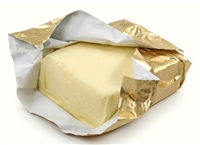Close your eyes and think of the Nordics. What do you see? Locks of flowing blonde hair, fresh air, life in the outdoors and people who live so effortlessly healthy that it makes you a bit jealous? This might be an exaggeration of how some of you view our Northern friends, but it would be hard to deny their health conscious mentality. We will let you in on a little. Nordic “not-so-secret” secret on how they maintain their healthy lifestyle, but only if you promise to share this little “secret” with everyone. Promise? Let’s dive in.
News
FATS |
11/18/2020 | |
|
All you need to know in order to live a healthier, Nordic-inspired lifestyle can be found in the latest Nordic Nutrition Recommendations report. What is the Nordic Nutrition Recommendations, you ask? The Nordic Nutrition Recommendations or NNR is a report that is published every 8 years since 1980 as reference for those trying to live healthier. Much like Health Canada, National Health and Medical Research Council of Australia and The Center for Nutrition Policy and Promotion in the United States, NNR works with more than 100 scientific experts, uses an evidence-based approach to assess the associations between dietary patterns, foods and nutrients and specific health outcomes. Simply put, this study takes out some of the guesswork some of you might face when making health choices. With the amount of information available online, offline and from your friends it can sometimes feel more difficult than it actually is to make the right decision, however guidelines such as the NNR and the others mentioned above are made to help you make the best choices for you and your family. NNR has outlined foods that should be included in a healthy diet, foods that should be limited and a recommended change that has the Enjoy Margarine Team rejoicing. Include plenty amounts of these healthy foods: (1) Vegetables (2) Fruit and berries (3) Pulses regular intake of fish (4) Vegetable oils (5) Wholegrain Low-fat alternatives of dairy and meat. Limit the intake of these foods: (1) Red and processed meat (2) Sugar (3) Salt (4) Alcohol Here is how the NNR got the EME team to rejoice: exchange butter and butter based spreads to vegetable oil and vegetable oils based fat spreads. This advice comes from the fact margarines in tub containers labelled as “vegetable oils based fat spreads” in the Nordics, or “margarine spread” or “spread” in other countries usually contain less bad fats (saturated and trans fats) than butter and more good fats.” References: www.imace.org |
||












